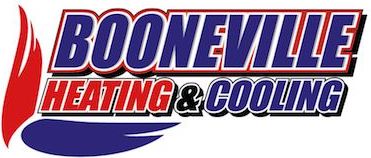
You shouldn’t be forced to give up comfort or empty your wallet to keep your home at a refreshing setting during hot days.
But what is the best setting, exactly? We discuss suggestions from energy experts so you can determine the best temp for your house.
Here’s what we suggest for the most energy-efficient setting for air conditioning in Booneville.
Recommended Thermostat Settings for Summer
Most families find placing the thermostat at 72-73 degrees is ideal. However, if there’s a sizeable difference between your interior and outside temperatures, your electrical bills will be higher.
This is our advice based on the U.S. Department of Energy (DOE) and ENERGY STAR®.
While at home: 78 degrees. While that seems hot, there are approaches you can keep your house cool without having the AC going frequently.
Keeping windows and blinds closed during the day keeps cool air where it should be—inside. Some window coverings, including honeycomb shades or plantation shutters, are designed to give more insulation and improved energy efficiency.
If you have ceiling fans in your house, the DOE says you can move thermostat temps about 4 degrees higher without compromising comfort. That’s due to the fact they refresh by a windchill effect. Since they cool people, not spaces, turn them off when you move from a room.
If 78 degrees still appears too hot on the surface, try running a trial for about a week. Start by raising your temperature to 78 degrees while you’re home. Then, steadily turn it down while following the suggestions above. You may be shocked at how comfortable you feel at a hotter temperature setting.
While away: 88 degrees. There’s no need to keep the AC running all day while your house is vacant. Moving the temp 7–10 degrees warmer can save you anywhere from 5–15% on your AC bills, according to the DOE.
When you come home, don’t be tempted to put your thermostat under 78 to cool your home more rapidly. This isn’t useful and usually leads to a higher cooling bill.
A programmable thermostat is a helpful way to keep your settings controlled, but you have to set programs. If you don’t set programs, you run the risk of forgetting to raise the set temperature when you take off.
If you need a hassle-free solution, think about getting a smart thermostat. This thermostat works with with your phone, so it realizes when you’re at home and when you’re out. Then it automatically modifies temperature settings for the biggest savings. How much exactly? Usually $180 yearly on heating and cooling, according to ENERGY STAR.
Another benefit of having a smart thermostat? You can use your phone to monitor and change temperature settings from just about anywhere.
While sleeping: Around 70 degrees. While ENERGY STAR advises 82 degrees, that could be unbearable for many families. Many people sleep better when their sleeping space is cold, so that’s why the National Sleep Foundation advises 60–67 degrees. But that might be too cool, based on your PJ and blanket preference.
We advise running an equivalent test over a week, moving your temp higher and progressively turning it down to pick the ideal temp for your house. On pleasant nights, you might find keeping windows open at night and relying on a ceiling fan is a better option than operating the AC.
More Approaches to Use Less Energy During Hot Weather
There are additional methods you can spend less money on cooling bills throughout warm weather.
- Buy an energy-efficient AC system. Central air conditioners only work for about 12–15 years and get less efficient as they become older. An upgraded air conditioner can keep your house more comfortable while keeping AC costs down.
- Book yearly air conditioner tune-ups. Regular air conditioner maintenance keeps your unit working like it should and might help it work at greater efficiency. It could also help lengthen its life cycle, since it enables technicians to discover small troubles before they create a major meltdown.
- Change air filters regularly. Read manufacturer instructions for changing your air filter. A dusty filter can lead to your system short cycling, or switch on and off too frequently, and drive up your cooling.
- Check attic insulation levels. Almost 90% of houses in the USA don’t have adequate insulation, according to the Insulation Institute. The majority of southern climates require 13–14” of attic insulation, while northern climates should have 16–18”.
- Have your ductwork inspected. Ductwork that has separated over time can leak cold air into your attic, walls or crawl space. This can result in huge comfort issues in your residence, including hot and cold spots.
- Seal cracks, doors and windows. Keep hot air where it belongs by sealing holes. You can also caulk or weather strip doors to seal more cool air inside.
Save More Energy During Hot Weather with Booneville Heating & Cooling
If you need to save more energy this summer, our Booneville Heating & Cooling specialists can help. Get in touch with us at 662-269-8716 or contact us online for extra details about our energy-saving cooling solutions.


